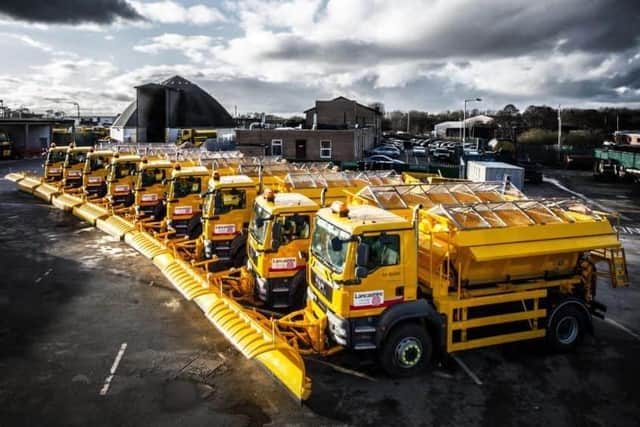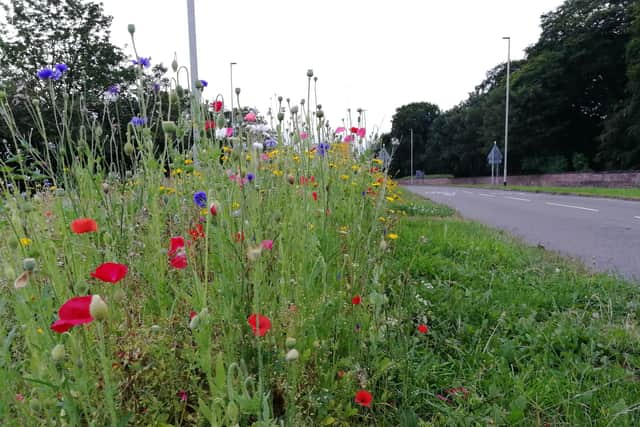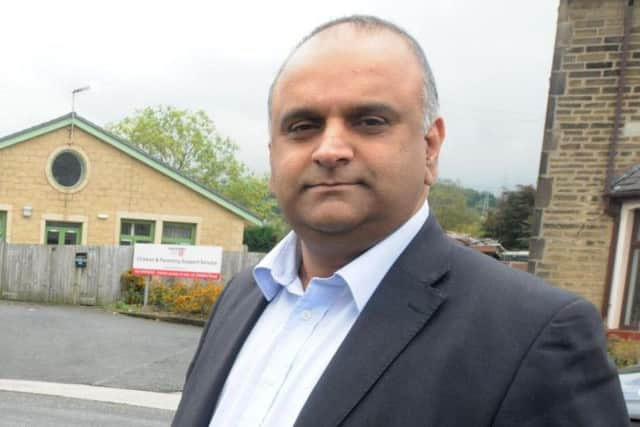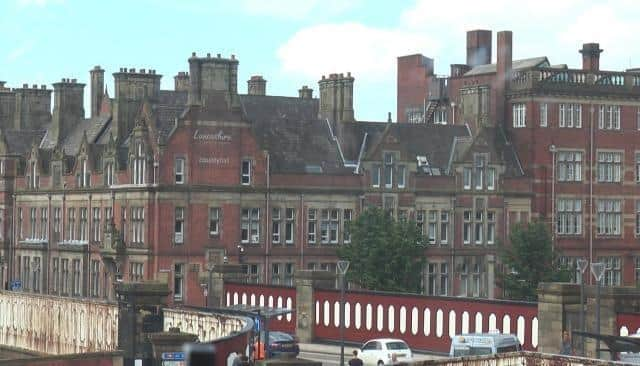Less gritting and longer grass on the cards as Lancashire County Council seeks £84m in savings
and live on Freeview channel 276
The authority’s Conservative cabinet will next week decide whether to give the go-ahead to £84m of spending reductions in an attempt to bridge a ballooning budget deficit which County Hall says has been caused by factors beyond its control.
It emerged last month that the projected shortfall in the county council’s coffers next year had almost trebled from £30.5m - as had been forecast as recently as June - to £87m.


Advertisement
Hide AdAdvertisement
Hide AdThe sharp deterioration in its financial position means that the authority is staring down the barrel of a £159.7m budget gap by the end of 2026/27 - a black hole that it blames on a caustic combination of spiralling inflation, rising interest rates, a higher than expected national pay settlement for local authority staff and growing demand for the adult and children’s social services it provides.
The Labour opposition group described the sums as "eye-watering" - and warned that the stage was set for another period of austerity.
Cabinet members will be asked to approve 32 different day-to-day savings measures in order bring the books back to something approaching balance. The changes to gritting and grass cutting represent some of the smallest potential money-savers in that list - amounting to £253,000 and £50,000 respectively.
However, they are likely to be the most immediately obvious of the proposals to residents, should they be implemented - and stand in contrast to the majority of the suggested savings which a cabinet report claims would be “transformational” and help reduce costs, but “without impacting negatively on service quality”.


Advertisement
Hide AdAdvertisement
Hide AdAmongst the other plans are a range of efforts to cut spending on the most expensive children’s home placements - including by the county council potentially building a new home of its own, for which it has put in a bid for partial funding.
If the gritting changes get the green light, the 45 primary routes that are currently treated when gritters are dispatched onto Lancashire's roads would be cut to 41. The reduction would be based on a risk-based review of the gritting network, the like of which the Local Democracy Reporting Service (LDRS) understands has not been undertaken by the county council for over 30 years.
Papers to be presented to the cabinet acknowledge the potential for an “increase in winter-related collisions on [the] untreated priority network”. Allowing ice to form on road surfaces could also cause damage to carriageways which would then have to be repaired once winter was over.
County Hall says that it might need to install more grit bins in order to help mitigate any risks, but believes that the proposed changes would make the gritting process more efficient and enable better use of condition data to allow “a more targeted treatment”.


Advertisement
Hide AdAdvertisement
Hide AdThose roads that will no longer be gritted under the proposal cannot be identified until the planned review has taken place. The changes would not come into effect until the 2023/24 financial year.
County Cllr Alan Vincent, cabinet member for resources and deputy leader of the authority, told the LDRS that highways bosses were content that the county council could still “safely grit the roads that need doing by just changing the routes around a little bit”.
He added: “There's always some risk attached to it, but they've basically said to us that they think these are the roads that we absolutely need to do the winter gritting on.“You could extend it and grit every road in Lancashire - but we couldn't possibly either do [that] or have the cash to do it. So we're going to have to do the best we can with the resources that we have available.”
Meanwhile, the grass cutting plans - which would affect only those verges alongside rural and high speed roads - would see the current four cuts per year trimmed back to three. The result would be to make the first mow of the season later than it has traditionally been.


Advertisement
Hide AdAdvertisement
Hide AdCounty Cllr Vincent says that the change would help to “green the environment” by preventing wildflowers being cut back too early by what are known as “flail” devices - and so giving biodiversity a boost.
However, the cabinet report recognises that residents may regard longer grass as being “untidy” - including the lengthier cuttings that would be left on the verges after mowing had taken place. If the authority opted to sweep up that detritus, it would cancel out the savings from scrapping one of the cuts in the first place.When consideration is being given to areas that should be left unmown for longer, sightlines at road junctions will continue to be maintained as a safety priority.
The LDRS understands that cabinet members and senior officers at County Hall have been having weekly meetings in recent months in order to identify the savings that are now on the table, as the urgency of addressing the latest financial squeeze to envelop local government became all too apparent.
County Cllr Vincent says that a lot of the proposed savings are about working “smarter”- an ambition which he insists is “not just a slogan”.
Advertisement
Hide AdAdvertisement
Hide AdPerhaps in that vein, the biggest ticket item in the proposed savings list is the £28.7m that County Hall believes it can generate by better “cost sharing” with the NHS - and increasing the amount it claims back from the health service to fund people’s ongoing healthcare needs.
According to the cabinet papers, resolving longstanding 'who pays for what' arguments that currently exist between the county council and the NHS may serve to speed up both decision-making and access to services for individuals - as well as saving the local authority cash.Similarly, it is estimated that £2.7m could be secured for the county council by making similar efforts when it comes to the financial arrangements for the care of children and young people.


County Cllr Vincent told the LDRS that while there would always be “give and take” in the relationship between the NHS and social care services, it was a question of “fairness”
“Should we be paying for things that other people have budgets for - or should we only be paying for things that we have a budget for?” he asked
Advertisement
Hide AdAdvertisement
Hide AdThe proposals seem to reflect the reality that ever-closer working between the NHS and local authorities like the county council does not diminish the desire to demarcate their respective responsibilities - and who should fund them - when times are tight.
Another savings carrot to be dangled before cabinet members next week comes in the form of a possible £11.3m that could be forged from the continued rollout of the Living Better Lives in Lancashire scheme. That initiative focuses on providing alternative options to formal care for those in need of some level of support - personalising the help, often at a community level, and providing a path back to independence for those who have lost it.
Pressed on whether people in receipt of such an intervention would simply conclude that they were being denied the traditional care package that they felt they needed, County Cllr Vincent said that the authority would listen to concerns from all quarters about any of its proposals - even where formal public consultation was not required.“We've been going through every potential option and coming up with the best solutions that we can to modernise…and to drive down the cost of how we operate. I think it's palpable that we're achieving that - certainly within Lancashire, I don't see a massive outcry that people are not getting the service that they think they should get.
“People will criticise, I get that - but it's easy to criticise. What's not easy to do is to say what you would do as an alternative to make sure that you square the circle - and that you can actually keep people safe, keep your services operating at a high level and not go bankrupt at the same time.”
’PARTIES SHOULD UNITE TO PUSH FOR MORE MONEY FOR LANCASHIRE’
Advertisement
Hide AdAdvertisement
Hide AdLabour opposition group leader Azhar Ali told the LDRS that he feared the now-delayed fiscal statement by the chancellor, Jeremy Hunt, would contain some unwelcome surprises for local authorities like Lancashire County Council when it is finally delivered on 17th November.
“We’ve had 12 years of austerity from Conservative governments - starting with Cameron and Osborne and now up to Rishi Sunak. The situation [faced by the county council] could be made worse, because the government is talking about cuts to capital projects and also revenue - and the biggest hit is always to frontline services like adult social care and children with special needs.
“The devil is in the detail, but we are now seeing a second round of austerity and the impact that years of Tory cuts have had on local council funding. £160m of cuts [for the county council] is eye-watering and it will potentially have a devastating effect on frontline services.
“It needs Rishi Sunak to finally invest in local government, because otherwise the county council is going to be an oversized parish council.”
Advertisement
Hide AdAdvertisement
Hide AdCounty Cllr Ali also challenged Tory members across the political divide at County Hall to join forces with Labour for the sake of Lancashire.
“We’ve got an economic crisis made by the Conservative government and it needs to be owned by Conservative county councillors, who haven’t fought for Lancashire - they are putting Conservative party politics first and the county second.
“It’s now time that they joined our repeated calls to lobby government together and put the people of Lancashire first.
“It’s a real crisis when you've got nurses and schoolteachers having to go to foodbanks to survive.”
RIGHT BACK WHERE WE STARTED FROM?
Advertisement
Hide AdAdvertisement
Hide AdLancashire County Council’s £159.7m projected budget shortfall by 2026/27 would - if it were allowed to come to pass - put the authority 80 percent of the way back to the £200m structural deficit with which it was burdened when the Conservatives retook control of County Hall in May 2017.
By that point, seven years of austerity had started to take its toll on local authority finances, but the Tories in Lancashire made bridging the budget gap a priority and a virtue. Only in February, at the annual budget meeting, county councillors heard that the authority’s medium-term deficit - at that point calculated up to the end of 2024/25 - was down to £41m.
The current set of financial forecasts would wipe out many of those gains, but deputy county council leader Alan Vincent denies being dispirited at the prospect of once again having to go through savings exercises of the scope that are now being demanded.
“It almost inevitably happens - events overtake you and nothing stays the same forever. So you have to be in a mindset, permanently, that says: ‘This is going alright now, but it might not stay that way.’ And if you're not, that's when you get really caught out.”
Advertisement
Hide AdAdvertisement
Hide AdThe harsh reality is that the £84.2m savings that the authority has to bring forward in something of a hurry would have finally eradicated the funding gap, had the situation not worsened in the way that it had.
However, County Cllr Vincent credits the transformation work which was already under way - and has now had to be accelerated - with ensuring healthy reserves were available to provide the authority with the “breathing space” to deal with such a deterioration in a measured manner and come up with a plan B. The reserve pot is expected to stand at £191m by next March and, if the savings proposals are approved, it should still contain £70m at the end of 2026/27, having been depleted to help plug financial holes in the interim.
County Hall is also aiming to find £32.4m in longer-term savings from strategic targets in domains including the council's contracts, technology and workforce. Together with the specific revenue savings being put before cabinet next week and cash from the sale of some assets, that would close the budget gap by 2026/27 to £41.4m.
County Cllr Vincent said that he was “confident” at this stage that compulsory redundancies could be avoided as part of the changes, because so many roles cannot be filled.
Advertisement
Hide AdAdvertisement
Hide Ad“The plain fact is that with the job vacancies that we have got anyway, we've got far fewer staff than, 12 months ago, we would have said we needed - but times are changing.
“Digitalisation will take certain jobs out and I think some of [them] are jobs that people don't want anyway.”
